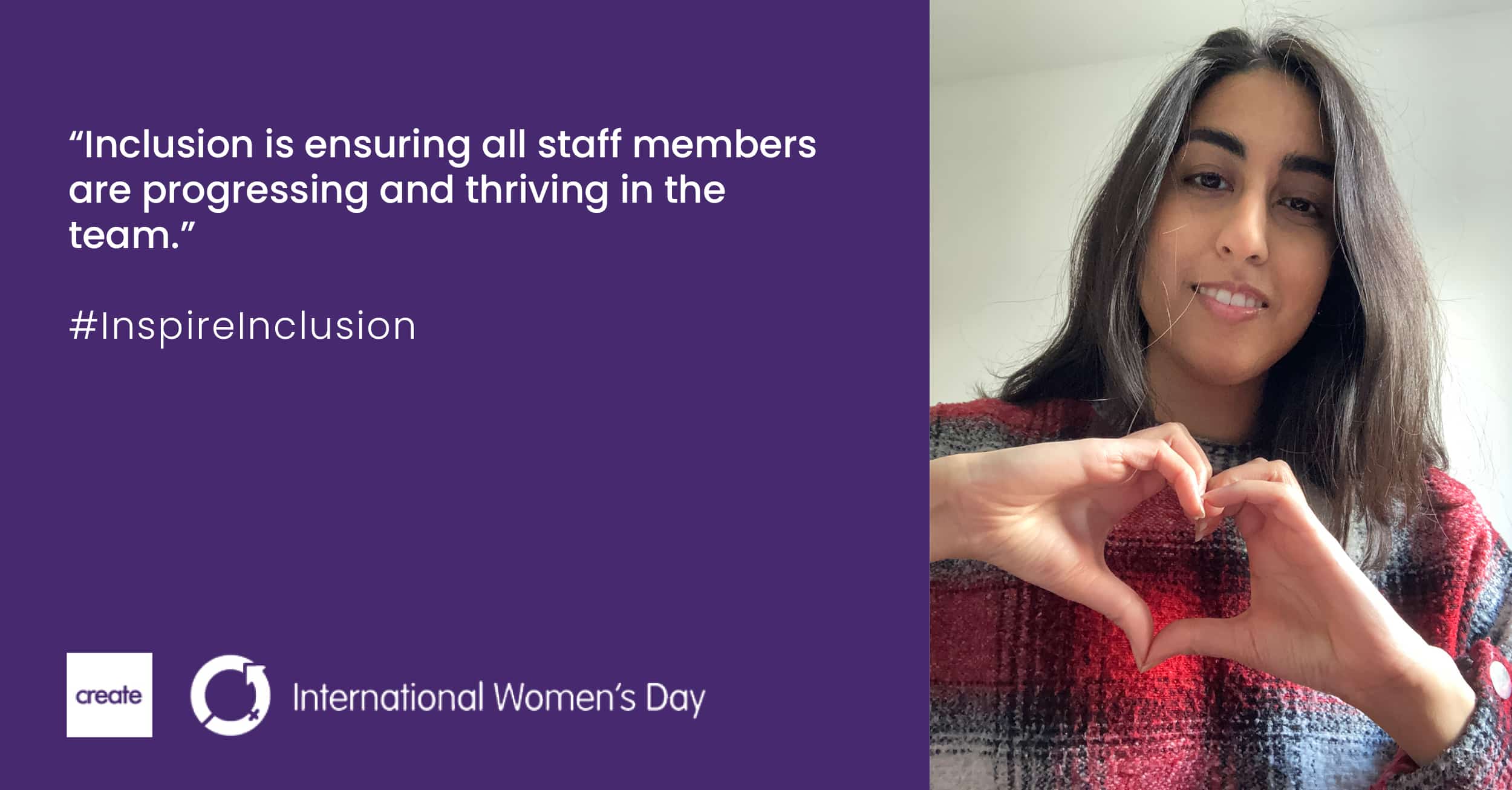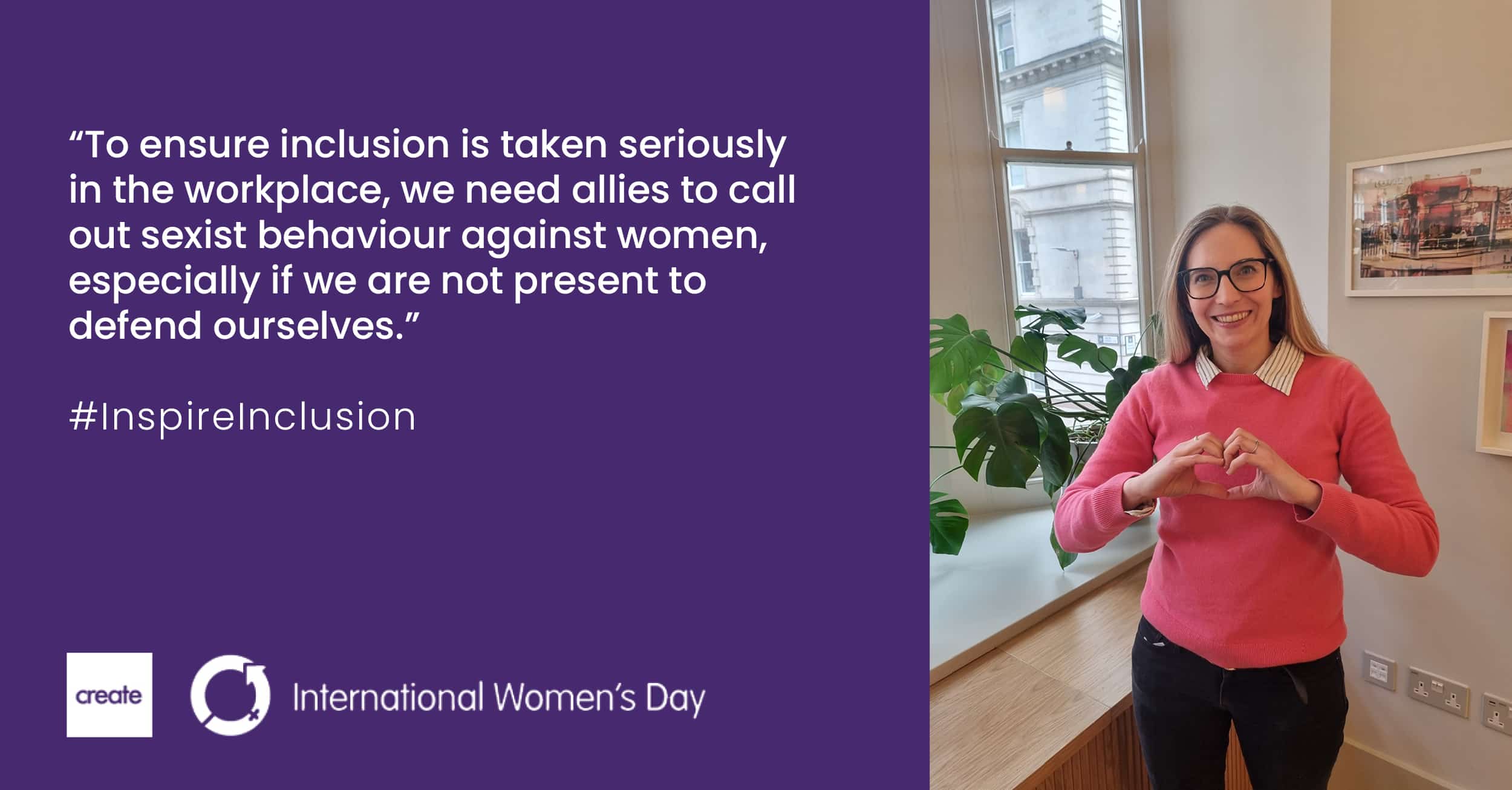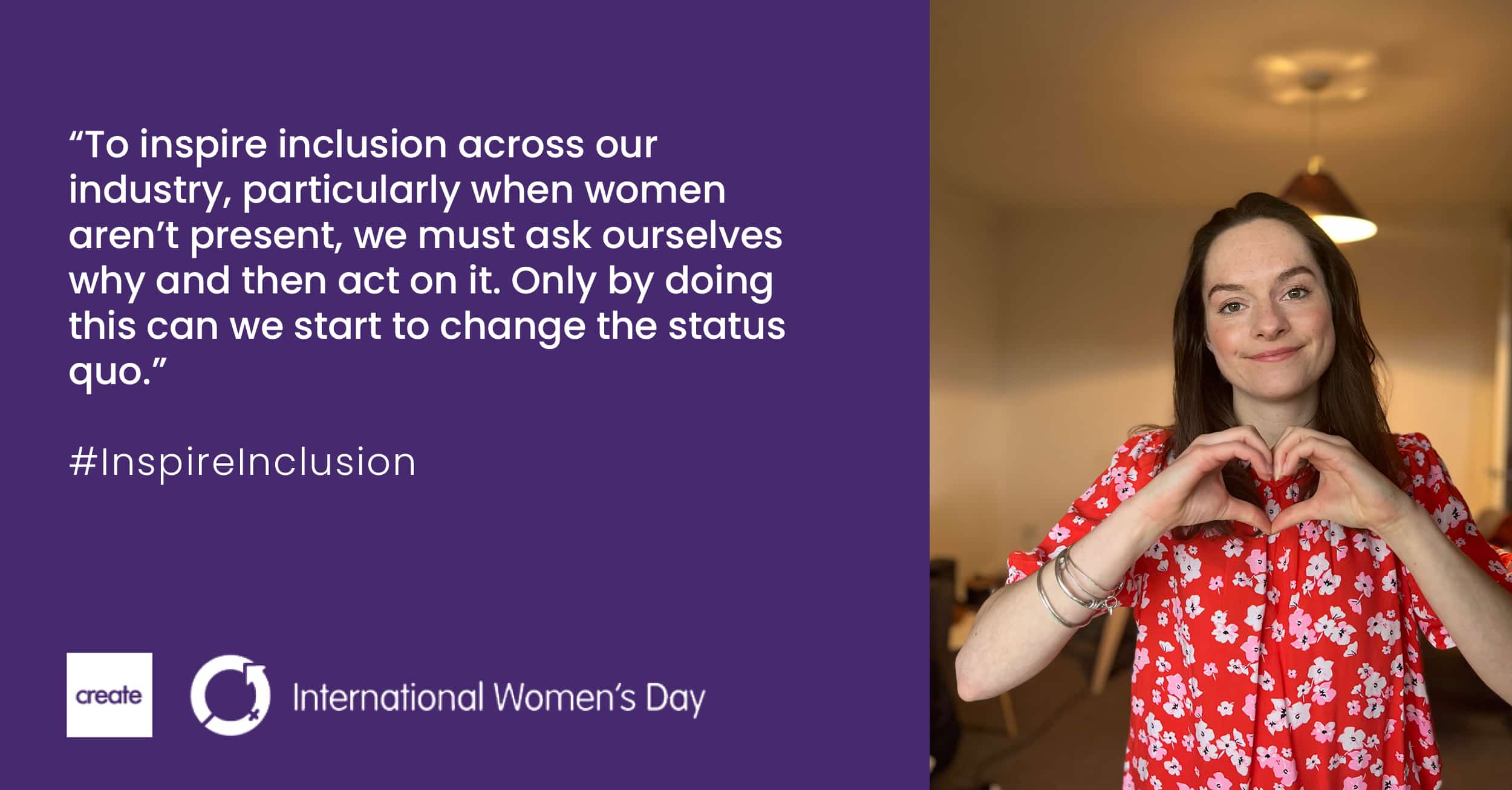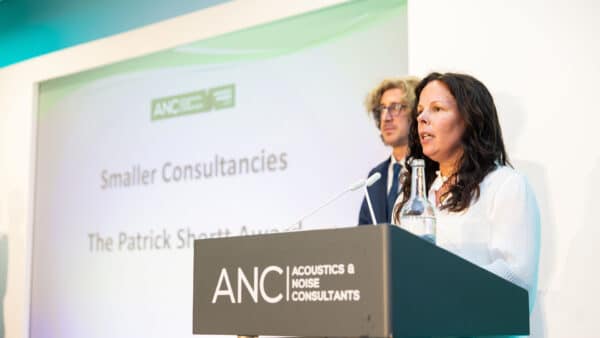International Women’s Day and Women in Construction Week 2024 – Q&A
In support of this year’s International Women’s Day (IWD) and Women in Construction Week, Create are focusing on the wonderful and talented women that help make us who we are. We’re also drawing attention to this year’s IWD theme of #InspireInclusion.
Imagine a gender equal world. A world free of bias, stereotypes, and discrimination. A world that’s diverse, equitable, and inclusive. A world where difference is valued and celebrated. Together we can forge women’s equality. Collectively we can all #InspireInclusion.
At Create, we are driven by a positive workplace culture that benefits everyone and inspires inclusion, discriminating against no one. We take pride in our diversity and inclusivity and strive to always be a business made up of individuals with different backgrounds, education, sexualities and genders.
In support of Women in Construction Week and IWD, we have been speaking to some of our women engineers and consultants, taking time out of their often hectic schedules to ask them about their role in construction, attitude towards women in our industry and the prospects for women and girls in the future.

SUNANDA SWAIN
TECHNICAL DIRECTOR (SUSTAINABILITY)
What advice would you give the next generation of women and girls thinking about a career in civil engineering and environmental consultancy??
This industry is driven by technological advances and innovation, so don’t be afraid of change and embrace new ideas to help tackle climate change and other environmental challenges. A lot of personal satisfaction can be taken from contributing to reducing the environmental impact of our industry at a local, regional, national and even global level.
Have attitudes towards women in engineering and construction changed since you first started your career??
When I started my career there were not many women. Now that has changed but the number is still low in comparison to other sectors; at the moment just 15% of women work in construction. However, I do believe that attitudes have changed, particularly amongst young women, many of whom are now opting to pursue a career in the industry. I believe this is due to increased awareness and better working environments, innovation and robust salaries and bonuses.
What can the industry do to make it easier for women who wish to raise a family to have a successful career?
The industry can make it easier for women to raise a family and have a successful career by providing a degree of flexibility when it comes to work-life balance. It can and has started to do this by adopting hybrid or remote working arrangements, offering flexible hours and payments, investing in new digital technologies and communication tools making it easier for mothers to stay in touch with their colleagues when outside of the office. Nobody can guarantee if and when they’ll fall pregnant and as a result businesses also have a degree of responsibility to plan ahead and consider things like maternity cover, handover arrangements and bonus packages that include childcare discounts. They can also define clearly established returning to work and leave arrangements for new parents.

BOMI OGUNADE
ASSOCIATE DIRECTOR (MEP BUILDING SERVICES)
How does our industry ensure it recruits, retains and develops a diverse range of talent?
Recruiting can start from schools, colleges and universities. It is important to engage young women at their early decision years in choosing the courses that place them in the path of the built environment. By providing more opportunities for internship, school visits, and career talks and ensuring that there are representations from the current diverse industry talents. Retaining and developing talents can be gained from providing work benefits including flexible hours, providing company training programmes and providing a clear guide/ route for career progression at entry levels.
Do you believe our industry promotes the creative and artistic talent of women?
I believe the industry does but can do much better. I have seen a steady increase of women in engineering since I joined the industry 20 years ago and these women are talented and creative in their positions within the companies they work for. Women are challenging the status quo and are leading more projects and included in decision making positions across small/ medium and large organisations.
What can the industry do to encourage more women and girls into STEM roles?
Engaging young women at schools and colleges with STEM activities and programmes can encourage a career path into the industry. Mentoring and educating on the diverse and growing disciplines within the industry will help as the current perception of engineering disciplines has not greatly changed in recent years as more young women are less aware of the varied specialised disciplines that has come out from the industry.

NALISHA PARMAR
SENIOR AIR QUALITY CONSULTANT
What can we do to further the advancement of women in our workplace, particularly into leadership and decision-making?
Start at the route of our journey. Develop girls’ skills at school. Treat them with the same energy as young boys to ensure they understand that they have the same opportunities. Inspire them to think big from a young age. Equip them with the skills they need through group activities and assignments and allow them to challenge our perception on how to be a leader and decision make.
On a scale of 1-10 how positive are you about the future role of women in workplaces?
Probably a 7. I think we have come a fair way in accepting women into roles they wouldn’t have been able to apply to before. However, we are still a little way from bridging the gap in pay and ratio of men to women at various grades. I’m hoping that our generation paves the way for future young women in the workplace.
Do you think there’s a stigma around women working in construction?
Lots of women don’t know that this is an option for them! When I sit on the underground with PPE, ready to go to a construction site, I get women asking me what I am doing. I think we need to spread more awareness that there are spaces for women in the construction field. That doesn’t just mean, lifting, building and getting dirty on site. But can also include all the non-site based roles such as health and safety, consultancy, surveying, logistics, marketing, finance, etc. There are so many roles and opportunities to suit any woman with a big dream.

ALECS BLAKE
SENIOR SUSTAINABILITY CONSULTANT
What can the industry do to encourage more women and girls into STEM roles?
To encourage more women and girls into STEM roles, the marketing and sales materials produced by contractors, consultants, etc. should show more women in construction, engineering and leadership roles. Not only would this demonstrate the variety of roles available but it would also visually show how they are an equal opportunities employer. Visuals are more often than not, more effective than words.
What can the industry do to make it easier for women who wish to raise a family to have a successful career?
Firstly, it’s the year 2024 and the choice between having a career or starting a family, should be a thing of the past. Our industry and others have come a long way to accommodate a more flexible approach to work-life balance but there is still more work to be done to ensure that this debate is a thing of the past. To make it easier for women to have children and maintain a successful career, we have to have conversations; with our partners, with our leaders, with our peers. We should be compromising and finding happy adjustments together – in all areas of our life – and the decision to become a mother, should not mean that a woman’s chance of rising through the ranks to a leadership role are reduced.
What advice would you give the next generation of women and girls thinking about a career in civil engineering and environmental consultancy?
I would tell the next generation of women and girls to be confident in their abilities and knowledge. It is crucial that they understand their worth and are not afraid to speak their mind. They must quickly learn to walk the tightrope between being too aggressive and not aggressive enough.

CLAIRE BURROUGHS
ASSOCIATE DIRECTOR (WATER & FLOOD RISK)
How important is it that buildings and infrastructure are designed to meet the needs of women and girls?
In a perfect world there should be no designing specifically for those who identify as female. Good design should already be addressing this need without being an afterthought. However, design has always been inherently biased because the industry has been male dominated, design codes also trail somewhat behind the world we live in and fail to address the reality. Design codes are to set a bare minimum of design, but they are relied upon heavily in the industry to deliver a building. We need designers to think more about the reality of how people function within a space rather than designing to the bare minimum design codes. For example, if you visit the Netherlands or a Nordic country their newest infrastructure is a showstopper in good design for all. They have a design mentality that means an 8-year-old girl or an 80-year-old man can use it without modifications being required. When I visited Oslo’s new library last year, there were extra wide entrances to allow people to walk in tandem in both directions, level access throughout, wide bike parking for cargo bikes and sufficient buggy parking inside for parents. It was light, busy, and people were enjoying the space inside and outside it. While here in the UK, housing developers design their properties to design codes which aren’t reflective of current needs for families with doorways and entranceways that aren’t wide enough to allow a pram through, for example.
Ending on a more positive note, when UK developments do think about how people will use the space, they are deemed as shining examples of what could be. A good example of this is Norwich City Council’s Goldsmith Street. So, while designing for women shouldn’t be a different set of design codes, if some decent thought and consideration can be undertaken as a whole, we would live in a world which has good design for everyone. To put it simply, we need designers to think “does this actually work?”
What can the industry do to encourage more women and girls into STEM roles?
The classic answer is that we need more STEM programmes. The thing to remember is that the young men and boys aren’t going anywhere, they are still coming into the engineering sector. So, I ask where are similar programmes for getting those who identify as male into nursing or teaching? These jobs which have traditionally been fulfilled by women need to also diversify and encourage men into them. In general careers are changing and the concept of something like a “blogger” did not exist ten years ago and as such, we need an educational system which encourages everyone to pursue any career they like. This will ensure there is a break in systemic traditionalisation of roles for a career.
What can the industry do to make it easier for women who wish to raise a family to have a successful career?
In my opinion, the construction and engineering industry is woefully behind other sectors on parental leave. But we have the chance to change this and be an example to other industries, for example we can allow for equal paid parental leave, which occurs in Iceland and is almost always taken up. Now I know that parental leave can be taken by both parents in the UK, unlike elsewhere but the father’s package is typically two weeks paid leave and that’s if you are lucky. Some companies provide enhanced parental leave to the mother but none is granted to the father of a similar calibre. If companies gave the same paid parental leave to both parents, we would see a rise in fathers taking time off and this becoming the norm. Allowing fair parental leave would also mean that women of a certain age would not be marked down in interviews because of the risk of us taking parental leave. Although illegal to do so, it is rampant in all industries.
On the return to work, flexible working needs to be understood better because those 8:45am meetings don’t work well with a school drop off period. It must be that all members of a company understand and recognise that the stay-at-home parent does not exist anymore. Everyone should be flexible in accommodating when children get ill and moving meetings to help with school drop off and pick up (because school hours do not align with the 9-5 working hours). Unfortunately, the construction industry traditionally struggles with flexibility, however on the consultants side of the fence, flexible working is more amenable and can be accommodated with good leadership ensuring it occurs.

GRACE BEARD
FLOOD RISK CONSULTANT
What can be done to remove entrenched biases towards women?
Employers and long-standing employees play a crucial role in removing biases by implementing policies that promote equal opportunities for women such as flexible working hours, maternity pay and childcare provision to reduce the necessity of choosing children or a career.
Additionally, providing specific mentorship programmes/ mentoring schemes tailored for women in construction and engaging with all employees in terms of diversity training to raise awareness of these unconscious biases will ultimately lead to a more inclusive and welcoming work environment.
Inclusion fosters engagement and improves company performance: agree or disagree??
Strongly Agree. A diverse and inclusive environment at work fosters a larger talent pool, increases engagement and trust between colleagues, introduces new perspectives (leading to further innovation), promotes better decision making and improves overall business performance.
What’s the most important thing we can do to #InspireInclusion in our business?
The most important thing we can do is promote the diversification of leadership roles within our business, because women everywhere have faced under representation and lack of support when they have tried to obtain leadership roles. Create are already in a great spot and have a number of women in senior roles making important operational decisions everyday but as a business that is focused on continuous improvement and enhancing the industry on the whole, more can be done to have a wider impact. By showing that the women in leadership positions within our business are as (or even more) highly qualified, competent and capable of leadership as men, we can forge a path and start to break down the traditional barriers of management roles.




